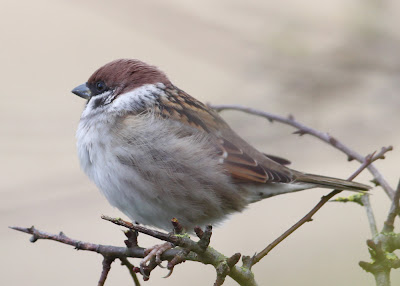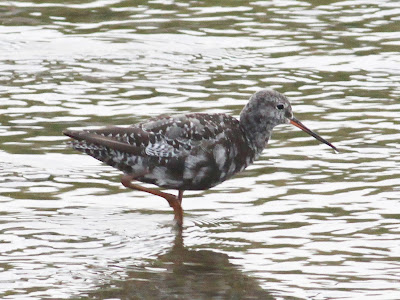Does anyone else consider that our precious Swallows are down in numbers again this year?
The BTO tell us the UK Swallow population is stable but I’m not wholly convinced. I can see that our local population is well down on the levels of ten, even twenty years, and certainly thirty years ago with birds absent from regular and familiar spots. I’m just not seeing any Swallows around buildings and farms that I pass on an almost daily basis, places where I normally expect to see more than one or two Swallows on the wing.
I live in a part of coastal Lancashire where traditional methods of farming have declined and where agricultural intensification has taken hold with a corresponding decline in the wildlife associated with a farmed environment. Hedge laying, rotational and diverse cropping, seasonal grazing, and leaving winter stubble and field margins are just some of the farming methods that have become less common in recent years, despite having many benefits for wildlife, the environment and food production. Many barns have been converted into dwellings or “horsey” environments where entrances have been blocked and where Swallows are no longer able to make their homes. If the Swallows do find a way in they are often made unwelcome and so fail to return in subsequent years. I believe that many horse owners dislike Swallows as the birds’ constant to-and-fro “spook” the horses, or their owners dislike the temporary untidiness that nesting Swallows inevitably bring.
In addition to localised problems there is a pattern in recent years of poor weather during the Swallows’ migration through North Africa and Southern Europe. At the same time there has been a succession of cool, even cold and wet springs in the UK at the exact time that Swallows need to establish territories, build nests and produce their early broods. Over a succession of such years the Swallow as a species struggles to recruit youngsters to sustain the necessary population levels to survive.
Swallow nestlings
I found an interesting site on the Internet where the trials and tribulation of just some of our Swallows have been documented during the early part of 2016. It makes for interesting and thought provoking reading. Here are some extracts from intuitive people who clearly take a great interest and pride in their Swallows.
15th April 2016 – Brittany, France – 11th April I woke up to a frost, it was 2c. My single male Swallow was not on his perch (light cable in the old stable) I have not seen him for 3 days. The weather has been really mixed. Many cold nights, often no insects. I wonder what temperatures they can tolerate? Today rain and miserable. Have not seen a Swallow all day. Even my main pair, recently arrived moved into the eaves in the boiler room at night for extra warmth, they are not around. This weekend the forecast is 2c both nights, I wonder if they have gone down to the south or the coast.
Swallow
29th April 2016 – UK – To echo other contributions, we had a very poor April for weather and this week has been particularly cold. There has been frost several nights this week and even some snow, it is actually colder than it was during some of the Winter. I have been concerned for the early arriving Swallows, Martins and Swifts and our single male Swallow who has been around for nearly a month has only made fleeting visits to the nest site so far. There seem to be more arrivals on a daily basis but insects must be in short supply and I am sure this weather has delayed the start of nesting. It looks as if it will return to at least near to average temperatures next week and I hope that will allow our birds to start pairing up to breed.
April 2016 – France – Just to let you know how the Swallows are doing in Brittany. It has been a difficult month for them as it is so cold. They arrived and have left again several times for up to a week each time. They came back on the promise of a sunny day only to be plunged into freezing cold nights. Most nights have been 3c, slight frosts. Not much food around. Mornings staying very cold so they left yet again. Yesterday cold northerly winds arrived, freezing nights all week ahead. All due to change on 1st May when jet stream moves, so I expect to see them back then. Only my main pair stayed this last time as they live in the boiler room and it’s quite warm in there.
Swallow
30th April 2016 – Yorkshire, UK – To update you on some rather unseasonable weather. This is what greeted us this morning on the 29th April, with just over 6 weeks to midsummer.
Spring in Yorkshire
Swallows in barn have not been seen all day. I imagine the conversation is going something like this from son to father. “Dad tell me again why we left Durban 30c to fly 8800 miles to sit in a Barn at 1c on our own in Yorkshire?” Weather is to stay cold, but no more snow, until early next week, then rain and westerly winds forecast, so hopefully weather will improve.
11th May 2016 – Latest news from Brittany, France. After leaving 3 times in April due to freezing nights and no insects, the Swallows finally came back 3rd May the very day the weather changed for the better, very warm easterly winds. Not just my Swallows but all around the area. My pair by the way just laid their eggs on 10th May, 10 days earlier than last year, probably because they decided to use last year’s nest, saving them precious time. Just as I think all is wonderful the farmer comes along and starts to spray the fields with pesticides…grim reality.
Swallow
23rd May 2016 – Yorkshire – UK – Just a quick update on our, and our neighbours returnees. We had 4 returns in April and our closer neighbour had one. The lone Swallow sat on the wires singing day in day out, and we were all getting concerned that his family group had perished on their Trek back, however his patience was rewarded this weekend when 5 Swallows arrived, and we have had a further two.
I was talking to a colleague on route to Hong Kong last week who had been to Africa recently. She said that they had some strong easterly winds in the Sahara on route south, and that these had extended down close to ground level and had subsequently heard there had been something in the press about this taking a toll on northbound migrants. I have not seen or heard of this, but it is not unusual to get these types of winds at this time of year as the desert heats up, and I am sure they take a steady toll on migrants.
Swallows
27 May 2016 – France – Oh my poor Swallows….Monday 23rd the first egg hatched, the next day the other 2 hatched. I could see the shells on the floor. Tuesday night we had a very cold night of 3c, for the end of May that is very unusual. She has been sitting on them for a couple of days, but I thought something was wrong because they were not flying in and out feeding them. Today the nest was empty for quite some time so I went in and looked in the nest. It was empty. Due to the location of the nest I do not think it was predators. They started their eggs earlier than normal this year and obviously it did not pay off.
29th May 2016 – UK – I just wanted to bring you the latest Swallow news from Wherwell. After the cold weather in April, our male Swallow was around for a few days and then disappeared before returning again. This pattern repeated throughout May and I was getting worried that he had perhaps moved territory (there are a number of farms in the vicinity with sizeable Swallow colonies and we only ever have one or two pairs with us) and we were going to be without breeding Swallows this year. Happily last Thursday the male reappeared again with female in tow.
Swallow
13th June 2016 – France – Swallows arrived slowly at the beginning of April on a sunny day. Unfortunately most of April was freezing cold with over 10 nights at near freezing point. Most mornings were so cold and the insects did not come out until the afternoons at about 3pm. During these cold periods most of the Swallows left the area. They came back when the weather was better only to be hit by further cold spells. Even in the month of May, we had 2 evenings at 3c and nearly every morning was heavy wet mist which did not clear until after lunch. Again no insects. There are not many wild flowers this year, no butterflies. Now there are hardly any Swallows.
My main pair bred and have 3 young almost ready to leave the nest but I normally have about 20 adults roosting on the electric line every lunchtime, this year there is just 1 Swallow. I have been asking everyone in the area what there Swallow situation is and they say the same thing. There are no Swallows. The skies are empty in the evenings, the telephone lines are empty. The month of June has improved greatly for the weather but there are still no Swallows around. I hope other areas/countries have done better.
10th June 2016 – Ireland –
Barn Swallow numbers are well below normal, first chicks hatched out on 5th June and one nest in the barn this year where we had four last year.
Swallow






































.JPG)

























.jpg)














